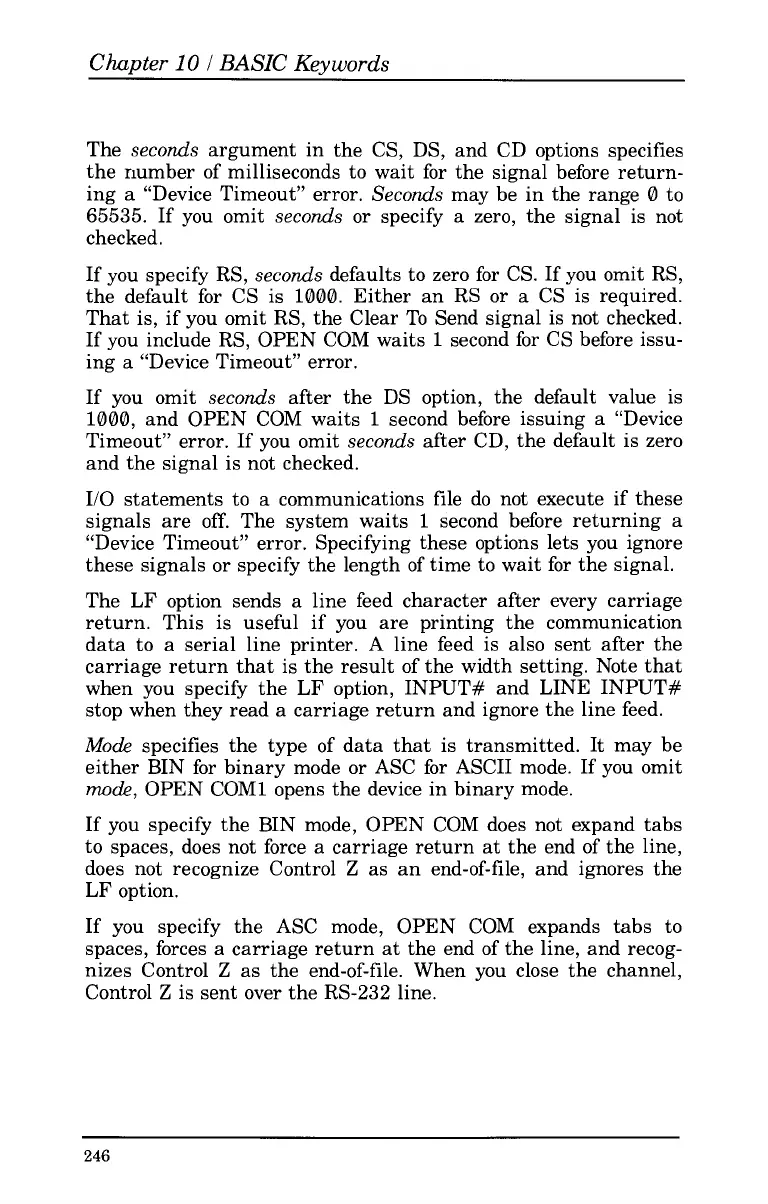Chapter
10
I
BASIC Keywords
The
seconds
argument in the CS, DS, and CD options specifies
the number of milliseconds to wait
for
the signal before return-
ing
a
“Device Timeout” error.
Seconds
may be in the range 0 to
65535.
If
you omit
seconds
or
specify
a
zero, the signal is not
checked.
If you specify RS,
seconds
defaults to zero for CS. If you omit
RS,
the default for CS
is
1000. Either an RS or a CS is required.
That is,
if
you omit RS, the Clear To Send signal is not checked.
If you include RS, OPEN COM waits
1
second for CS before issu-
ing
a
“Device Timeout” error.
If you omit
seconds
after the DS option, the default value is
1000, and OPEN COM waits
1
second before issuing a “Device
Timeout” error. If you omit
seconds
after CD, the default is zero
and the signal is not checked.
IiO statements to a communications file do not execute if these
signals are
off.
The system waits
1
second before returning a
“Device Timeout” error. Specifying these options lets you ignore
these signals or specify the length of time
to
wait for the signal.
The LF option sends a line feed character after every carriage
return. This
is
useful if you are printing the communication
data to a serial line printer. A line feed is also sent after the
carriage return that is the result of the width setting. Note that
when you specify the LF option, INPUT# and LINE INPUT#
stop when they read a carriage return and ignore the line feed.
Mode
specifies the type of data that is transmitted.
It
may be
either BIN for binary mode or ASC for ASCII mode. If you omit
mode,
OPEN COMl opens the device in binary mode.
If
you specify the BIN mode, OPEN COM does not expand tabs
to spaces, does not force
a
carriage return
at
the end of the line,
does not recognize Control
Z
as an end-of-file, and ignores the
LF option.
If
you specify the ASC mode, OPEN COM expands tabs
to
spaces, forces a carriage return at the end of the line, and recog-
nizes Control
Z
as the end-of-file. When you close the channel,
Control
Z
is sent over the RS-232 line.
246
